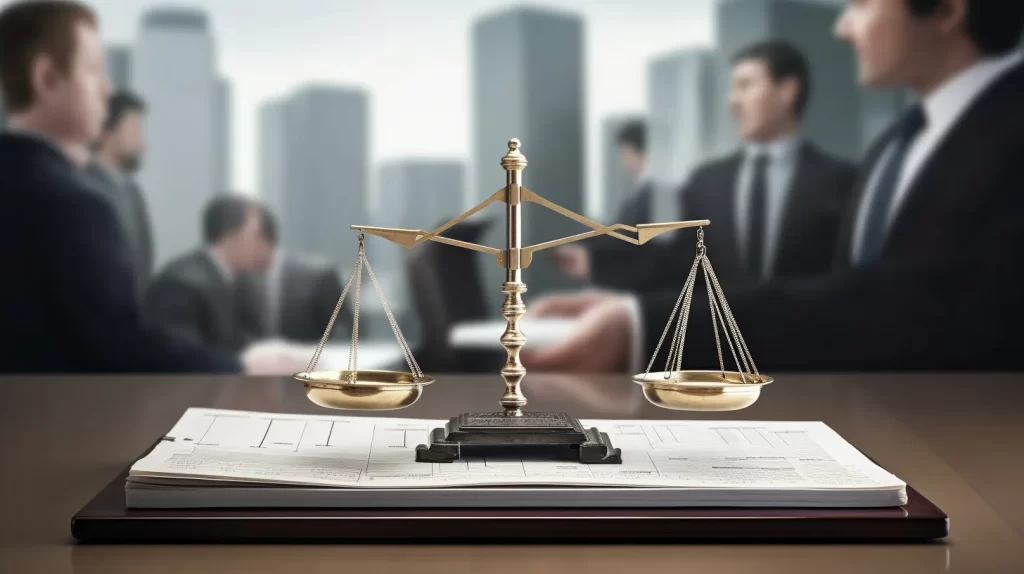Introduction:
In order to attract local and foreign investments and reward local innovation and creativity, countries must be able to assure investors that their intellectual property rights will be protected.
However, we must emphasize that the attractiveness of local and foreign investments depends on the existence of many determinants essential for host countries to ensure competition in this area, among others the protection of intellectual property rights, which is the one of the main conditions.
(Rights to patents, copyrights, trademarks, geographical indications, industrial designs and trade secrets)
While the lack of effective protection of this element can’t attract quality foreign or local investments in the national economy.
- What is meant by intellectual property?
Intellectual property refers to the mind’s creations of inventions, literary and artistic works, designs, logos, names and images used in commerce. Intellectual property is legally protected by rights such as patents, copyright and trademarks that enable people to gain recognition or financial benefit from their innovation or invention. By establishing a healthy balance between the interests of innovators and the interests of the general public, the intellectual property system aims to provide an environment conducive to creativity and innovation flourishing.
- What is the applicable law in Egypt?
The applicable law governing the protection of the intellectual property rights in Egypt is the Law no. 82 of 2002 and its Executive Regulations.
- What are the kinds of the intellectual property rights?
- Literary property:
- Copyrights
It is a legal term describing the rights granted to creators with respect to their literary and artistic works. Copyright covers a wide range of works, from books, music, oil paintings, sculptures and films to computer programs, databases, advertisements, geographical maps and technical drawings.
Exhaustive lists of works covered by copyright are usually not to be found in legislation. Nonetheless, broadly speaking, works commonly protected by copyright throughout the world include:
- Literary works such as novels, poems, plays, reference works, newspaper articles
- Computer programs, databases;
- Films, musical compositions, and choreography;
- Artistic works such as paintings, drawings, photographs, and sculpture;
- Architecture
- Advertisements, maps, and technical drawings.
Copyright protection extends only to expressions and not to ideas, procedures, and methods of operation or mathematical concepts as such. Copyright may or may not be available for a number of objects such as titles, slogans, or logos, depending on whether they contain sufficient authorship.
- Neighboring Rights
It is referred to as the rights associated with copyright, through which protection is granted to performers, producers of sound recordings, and broadcasting organizations, and which helps innovators to communicate their message to the public and publish their work. Protection shall not apply to abstract ideas, procedures, operating methods, laws, decisions, provisions and concepts of sport as long as they are in their initial form and no creative or innovative effort was required to assemble, catalogue and arrange them.
- Industrial property:
- Patent
A patent is an exclusive right granted for an invention. In general, a patent grants its owner the right to decide on the manner – or possibility – of third parties’ use of the invention. In return for that right, the patent owner makes the technical information available to the public, about the invention in the published patent document.
Protection is granted for a limited period of time, generally 20 years from the date of filing the application.
- Trademarks
A trademark is a sign that distinguishes the goods or services of a company from the goods or services of other companies. Trademarks are protected by intellectual property laws.
The duration of protection varies, but the trademark registration can be renewed without limits after the time limit in exchange for additional fees. Trademark protection is enforced by the courts, which in most systems have the power to prevent trademark infringement.
- Industrial Designs
Industrial design is the decorative or aesthetic appearance of an item. The design can consist of three-dimensional elements, such as the shape or surface of the piece, or two-dimensional elements, such as graphics, lines or colors.
The protection of Industrial Designs is 10 years
- Geographical Indications
A geographical indication is a sign used for goods that have a specific geographical origin and have characteristics, reputation or characteristics that are primarily ascribed to that origin. For a mark to have the same role as a geographical indication, it must identify a product as originating from a particular place.
In addition, the product’s qualities, characteristics or reputation must be primarily attributable to the place of origin. Since the qualities depend on the geographical place of production, there is a close connection between the product and its original place of production.
Main ways to protect Geographical Indications:
- Special systems (for protection);
- The use of collective marks and certification marks;
- Methods focused on business practices, including administrative schemes for product approval.
- Through the laws of unfair competition
- Trade Secrets
Trade secrets are about confidential information that may be sold or licensed to be used.
In general, information must meet the following conditions to qualify as a trade secret and to be protected:
- Information that has commercial value because it is confidential.
- Information only to a small group of people.
- Be subject to reasonable steps taken by the rightful holder of the information to keep it secret, including the use of confidentiality agreements for business partners and employees.
The unauthorized acquisition, use or disclosure of such confidential information in a manner contrary with fair business practices is an unjust practice and even a violation of the protection of commercial secrecy.
- Plant Variety
- Importance of the intellectual property?
Legally:
- Protecting the rights of inventors from infringing some of their inventions without obtaining their prior permission.
Economically:
- Protect the product from theft, copying and piracy.
- Protection of the consumer from fraud and commercial imitation
- Establishment of local industries.
- Allow the creator, owner of the patent and trademark, or the author to benefit from and invest in his work.
- Encouraging and attracting foreign investment.
- Reducing the spread of counterfeit and copied works.
- Facilitate Transfer of Technology to the GCC countries and their resettlement.
- Facing the challenges of E-Commerce and the challenges of the communications and Internet community.
- Intellectual Property Protection Office at the Information Technology Authority
This Office applies the provisions of Law No. 82 of 2002 regarding the protection of intellectual property rights and its executive regulations issued by Prime Ministerial Decree No. 497 of 2005 and No. 2202 of 2006 and Minister of Communications and Information Technology Decree No. 107 of 2005 and Circular book No. 11 of 2007 issued by the Adviser to the General Public Prosecutor regarding the protection of computer program works and databases.
Conclusion:
The intangible nature of intellectual property faces difficulties in protecting it when compared to traditional property such as land or merchandise. Unlike traditional property, intellectual property is “indivisible”, as an unlimited number of people can “consume” the intellectual good without draining it. In addition, investments in intellectual goods suffer from problems of appropriation: the landowner can enclose his land with a strong fence as well as employ armed guards to protect it, but the producer of information or literature usually cannot do much to prevent the first buyer from copying and selling it at a lower price.
Balancing rights to be strong enough to encourage the creation of intellectual goods but isn’t strong enough to prevent widespread use of the goods is a primary focus of modern intellectual property law.



